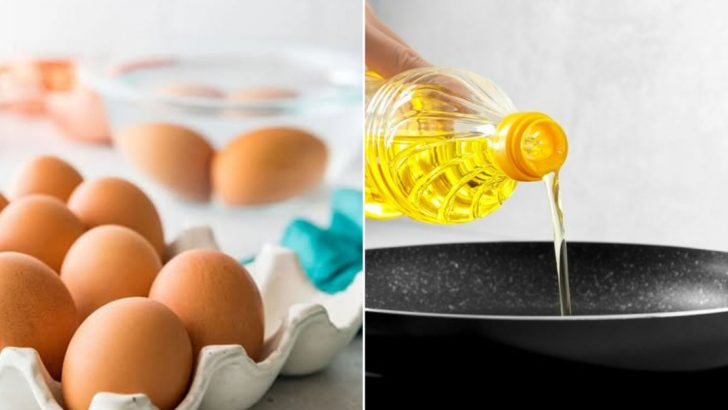Flipping eggs might seem simple, but it’s a skill that can make or break your breakfast. Many start their day with eggs, but little mistakes can leave them overcooked or broken.
Learning about these common errors can help you avoid morning mishaps and whip up the perfect eggs every time.
1. Using The Wrong Pan

Many people grab the biggest pan they can find, thinking it will help flip eggs easily. However, using a heavy skillet can make it tricky to handle delicate eggs. A small non-stick pan is more suitable. It allows for smooth flipping and less breakage, ensuring your breakfast looks as good as it tastes. Remember, the right tool can make all the difference.
2. Too Much Heat
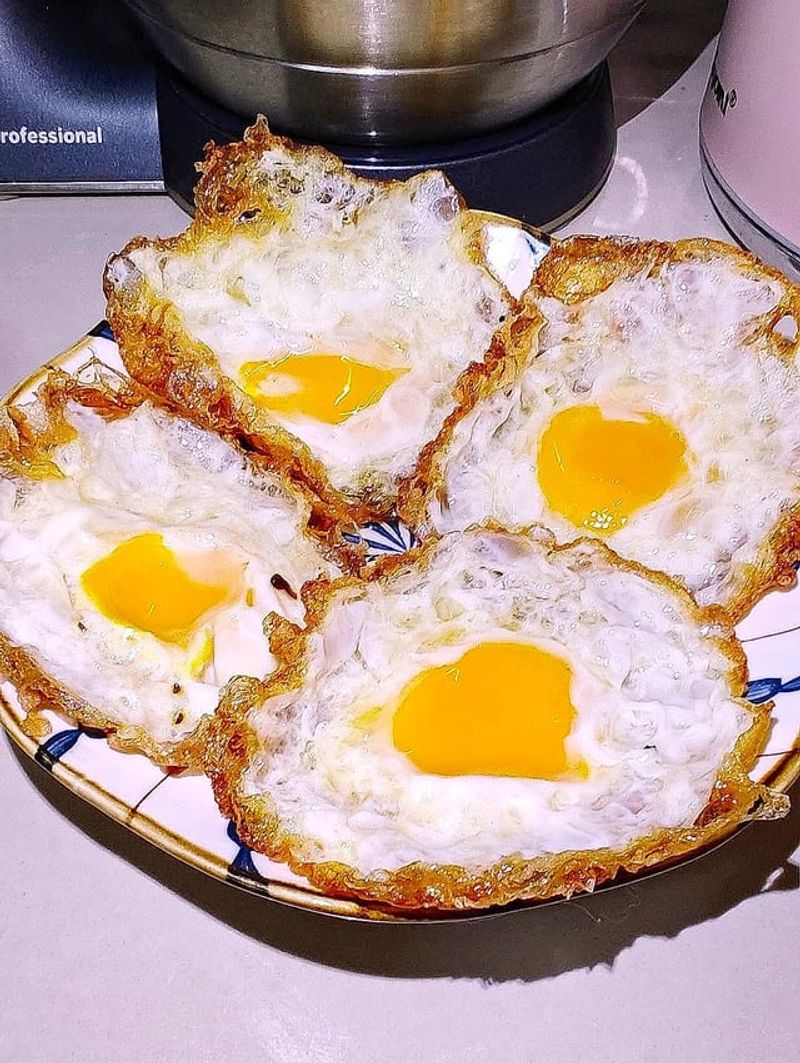
Cranking up the heat might seem like it’ll cook eggs faster, but it often results in burnt edges and runny yolks. Keeping the heat low ensures even cooking, leaving the yolk creamy and the whites tender.
Patience is key when aiming for that flawless flip. Cooking on low heat also allows you to control the process better, catching any signs of burning in time.
3. Rushing The Flip
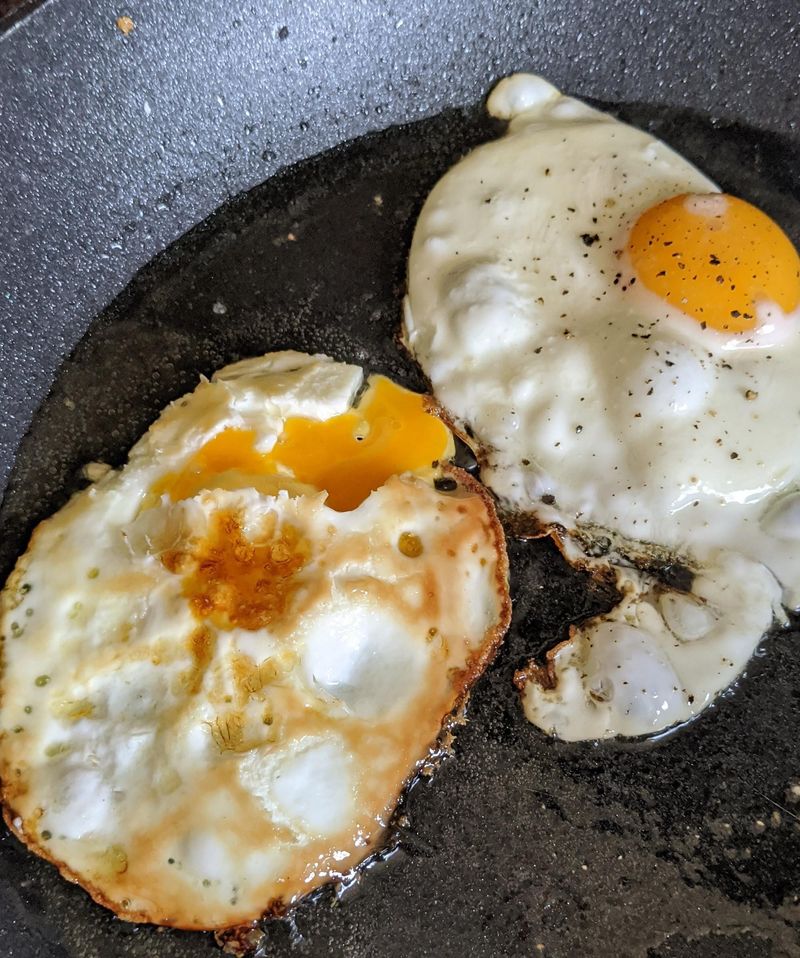
Patience is truly a virtue in the kitchen. Flipping an egg before it’s ready can lead to messy spills or broken yolks. Wait until the whites are mostly set but the yolk is still wobbly for that perfect turn. Timing makes all the difference. Rushing can cause the egg to stick, tearing it apart. So, give it a moment, let the egg settle, and then flip with confidence.
4. Skipping The Oil
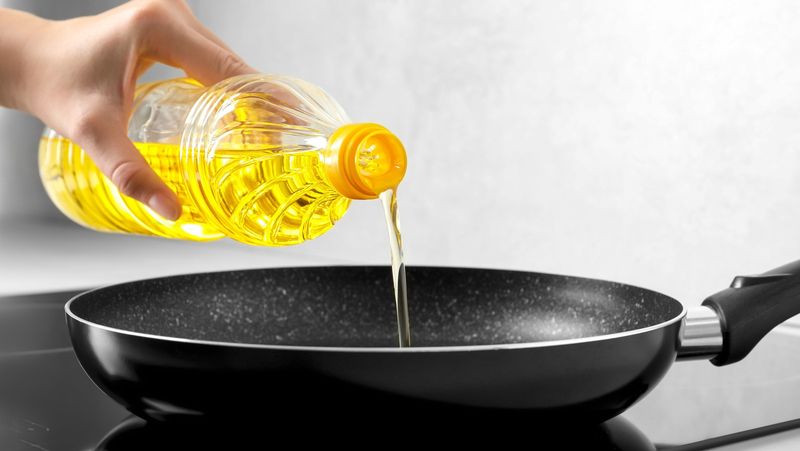
Oil or butter is essential for a smooth flip and adds flavor. Skipping it might lead to eggs sticking and breaking apart. A small amount will make all the difference, ensuring your eggs lift off the pan effortlessly.
Besides preventing sticking, oil or butter enhances the taste and gives the egg a golden crust. Next time, don’t hold back on a little grease—it’s a simple trick for spectacular results.
5. Using Cold Eggs
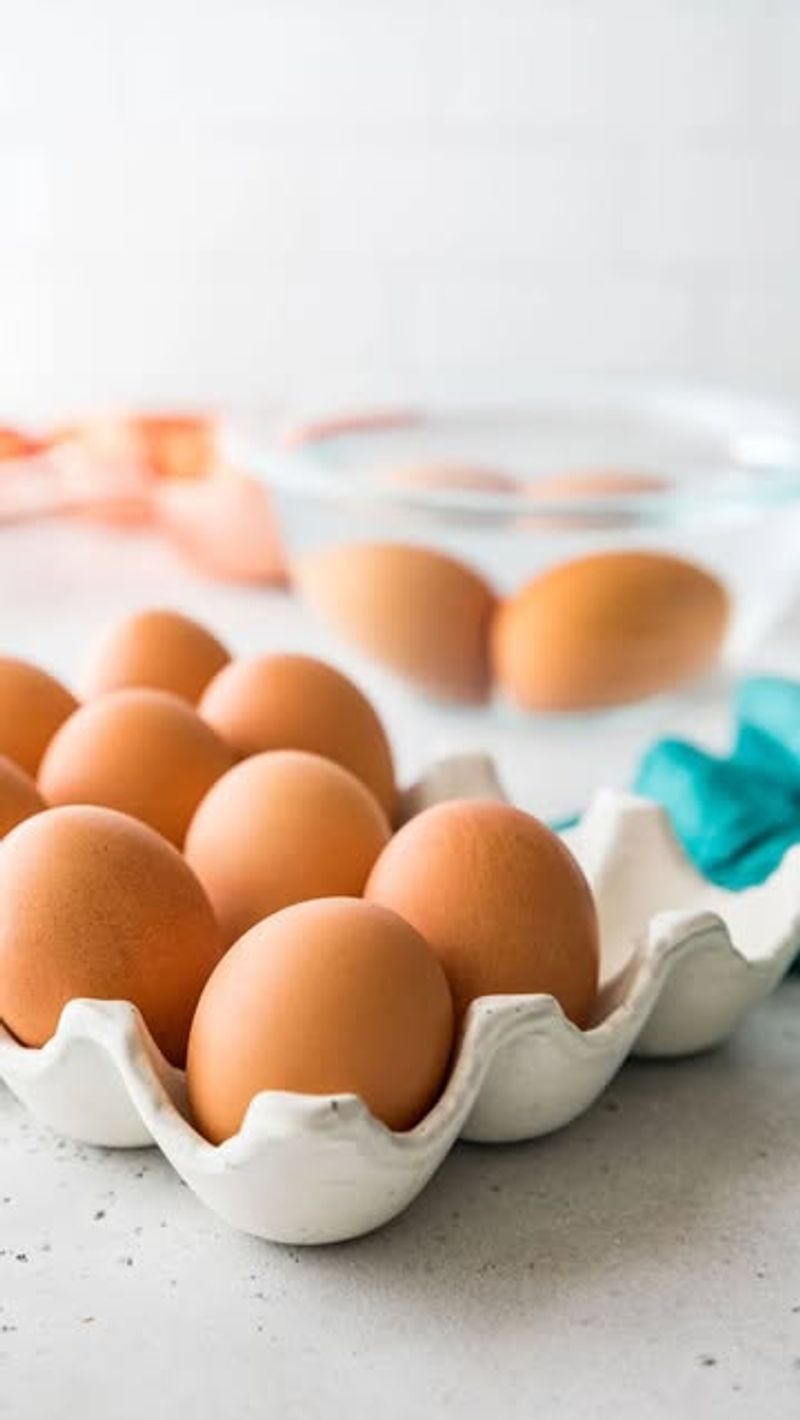
Cold eggs straight from the fridge can lead to uneven cooking and make flipping tricky. Letting them come to room temperature helps cook the egg evenly, giving you a beautifully flipped breakfast.
Allowing eggs to warm up slightly ensures the whites cook evenly, preventing the yolks from overcooking. It’s a small step, but it makes your breakfast preparation smoother and more successful.
6. Cracking Directly Into The Pan
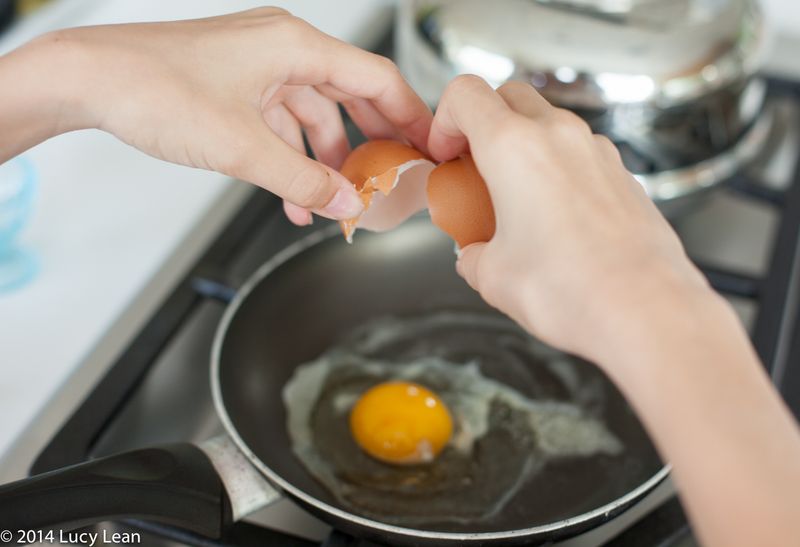
Cracking eggs straight into the pan might seem efficient but often leads to broken yolks or shells in your food. Cracking them in a separate bowl first gives you control and ensures shells stay out.
This small step allows you to check the egg’s quality before cooking.
7. Overcrowding The Pan
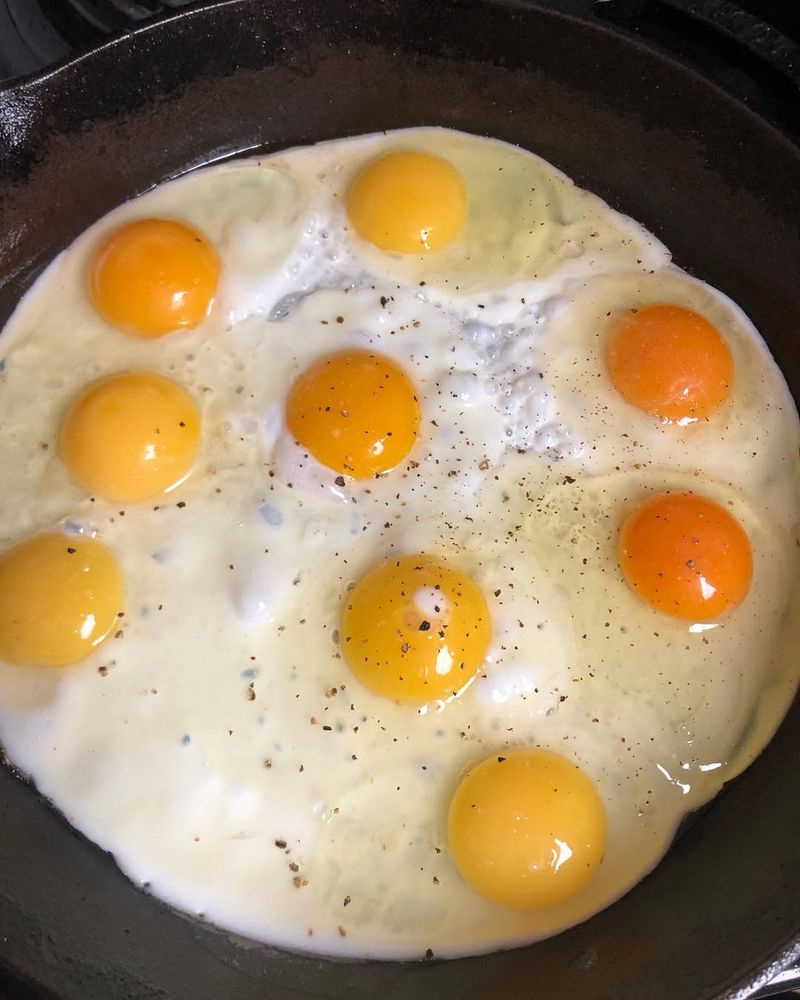
Putting too many eggs in the pan can lead to uneven cooking and make flipping impossible. Give each egg enough space to cook properly, which will ensure they all cook evenly and look great.
Overcrowding will also cause eggs to stick to each other, making it hard to flip them individually. By focusing on one or two eggs at a time, you ensure a picture-perfect breakfast every morning.
8. Wrong Spatula Choice
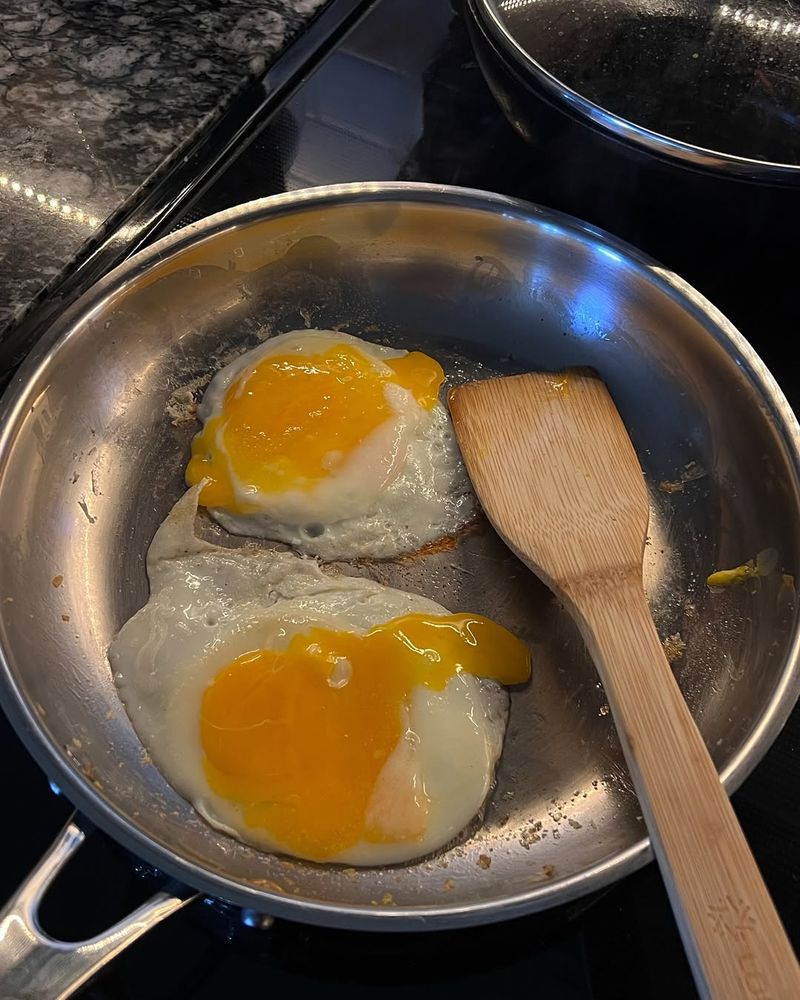
Using the wrong spatula can make flipping eggs a nightmare. A flexible, non-stick spatula glides under eggs effortlessly, ensuring a clean flip without sticking or breaking.
It’s a small investment that enhances your cooking experience. Besides, opting for silicone or plastic also prevents scratching your pan.
9. Ignoring Egg Freshness
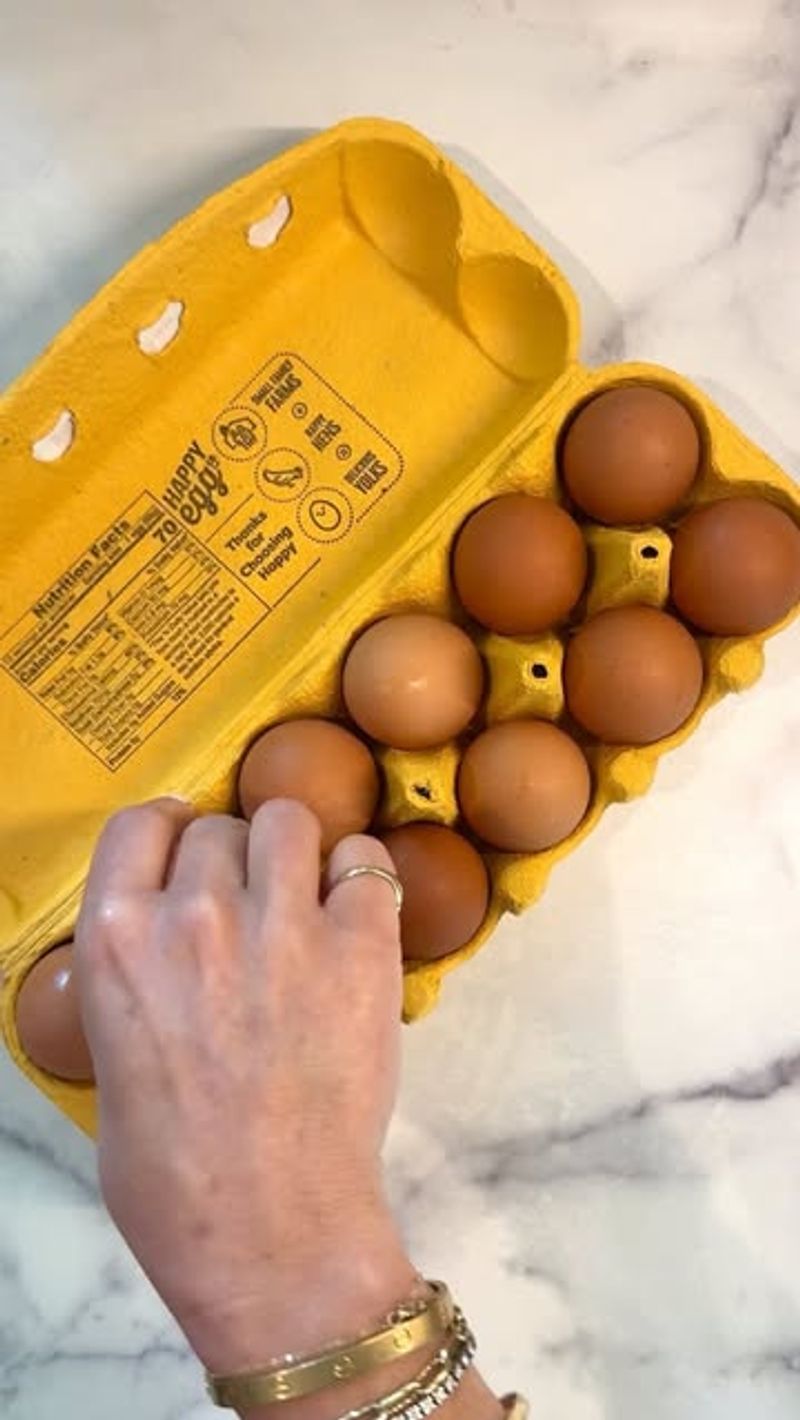
Fresh eggs have firmer whites and yolks, making them easier to flip. Older eggs spread out more in the pan, leading to uneven cooking and difficult flipping.
Always check the freshness before starting to ensure your breakfast turns out beautifully. You can perform a quick freshness test by placing the egg in water—if it sinks, it’s fresh.
10. Flipping With Force
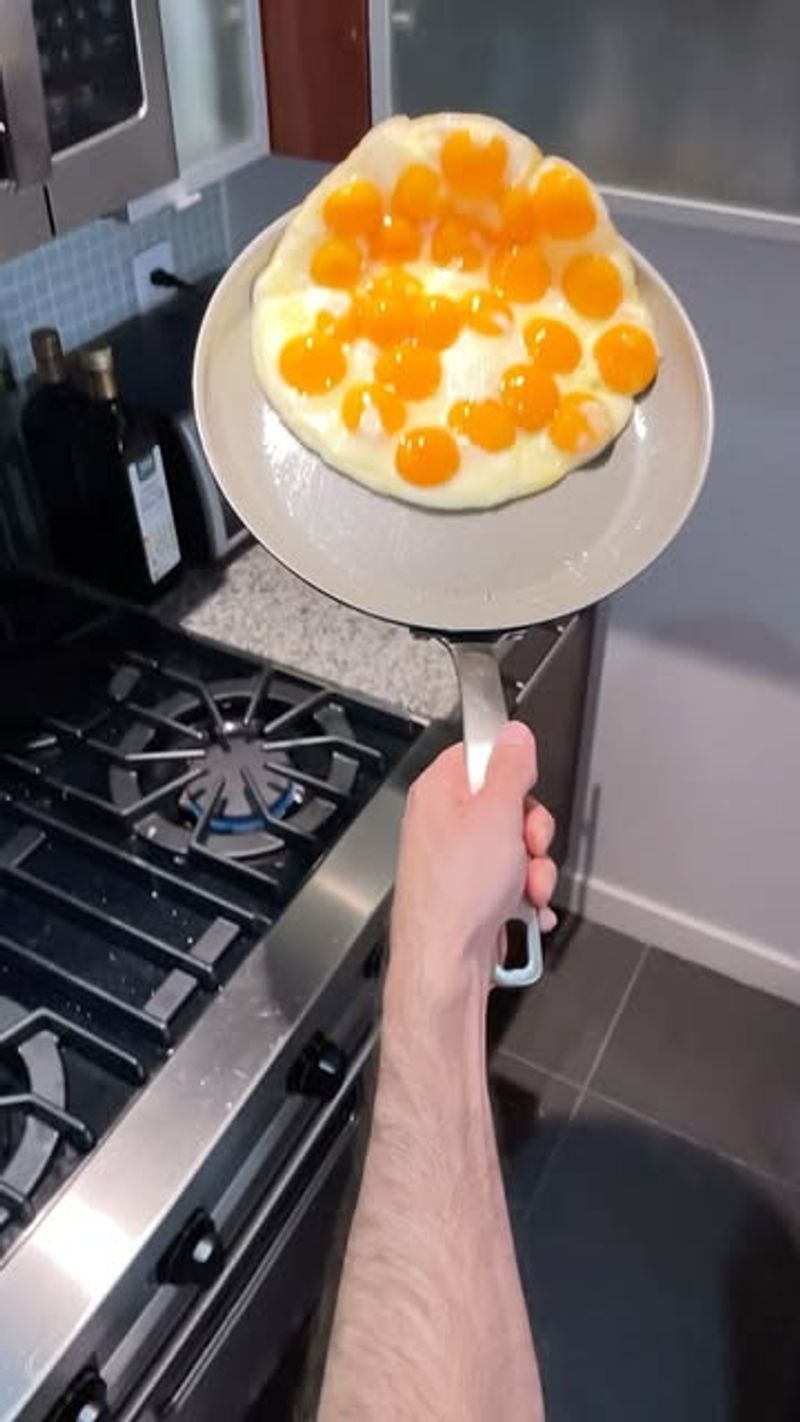
Gentle motion wins when flipping eggs. Using too much force can splatter yolk and ruin your perfect egg. A gentle nudge with the spatula ensures the egg lands safely on its other side.
Practicing slow, deliberate movements leads to better control and less mess. It’s not a race; taking your time makes cooking more enjoyable and less stressful.

